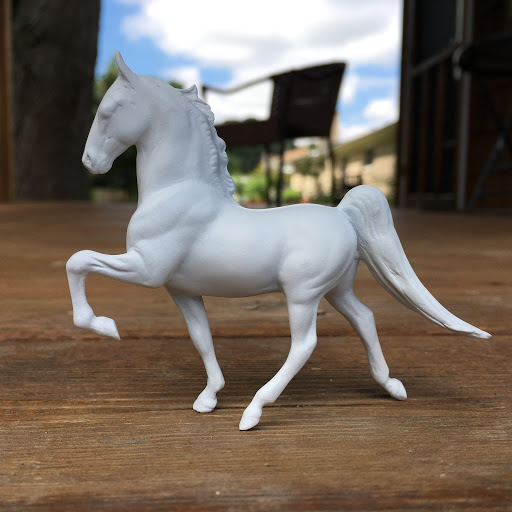 |
| Meet Harlem Road, an American Saddlebred Stallion! |
I'm doing National Retro Vintage Month (NaReViMo)! Every August artists come together (on Facebook) to complete one custom in the vintage or retro custom style. Hosted by Sarah Minkiewicz- Breunig, the group can be found here: https://www.facebook.com/groups/694618414328297
My project is a G1 Saddlebred, a mold that has always made me smile ever since I discovered Stablemates in the late 1980's. (And is also on my website's list of Stablemate molds in need of a custom: https://sarahtregay.com/smmolds.html)
I've moved the head a little bit, replaced the ears and added to the tail. Right now I'm in the prepping stage:
 |
| G1 ASB in progress |
I'm trying out an old technique that I used to make new ears around 1990. I was an industrial design major at RIT and as part of the program we made models of products out of plastic. The plastic started out as flat sheets and could be heated to form different shapes.
I used this plastic to make mule ears on this vintage Traditional-scale girl:
Long story short, what a great way to celebrate NaReViMo than digging up an old technique. Here is the much smaller ears glued into a cut in the neck:
I'm planning on trying a little handpainting with acrylics to finish up this model. More soon!
 |
| Painting on mapping in acrylics |
I’m revisiting some old ideas for this paint job. First up is creating the mapping and cat tracks by painting them the color of the markings which is black. My model is inspired by a stallion named Snowy Harlem. http://www.snowyharlem.com/media.
 |
| Mapping knocked back |
 |
| Starting to paint |








Comments
Post a Comment